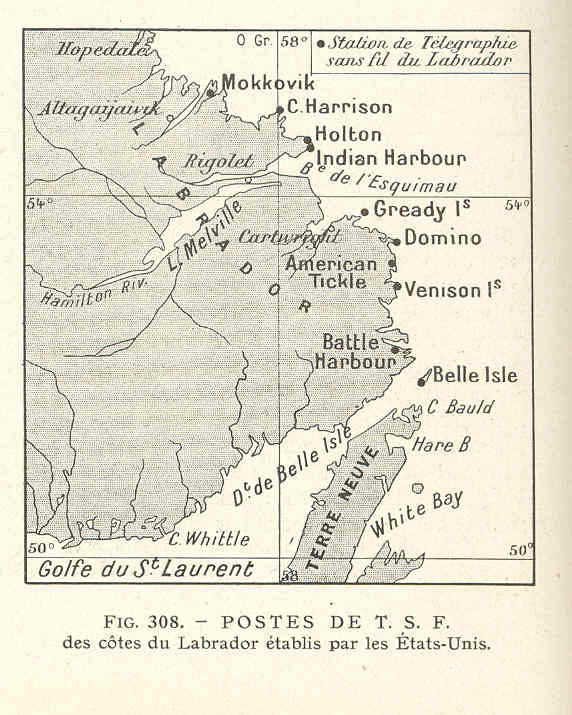Expanding Into Labrador
Labrador is a large area with harsh weather conditions and small rural communities. The Dominion of Newfoundland simply could not afford to run wires to every one of them. With the new wireless stations, however, a communications network in Labrador was suddenly possible.
The Newfoundland government began talking with the Canadian Marconi Company (CMC) in 1901 and made a deal in 1903 to build stations along the coast of Labrador. Due to poor soil conductivity and weather, the Labrador stations could not transmit as far as similar stations could elsewhere. More stations were needed. Despite servicing a much smaller population, 16 of the 26 stations shown on the timeline were in Labrador. They served an important role, but much information about them has been lost over time.
The government of Newfoundland built its first five Labrador stations at American Tickle, Battle Harbour, Domino, Indian Harbor, and on Venison Island. These stations were all operating by 1906. They communicated with passing ships and sent and received messages for local citizens and businesses. In 1910, additional stations were built at Cape Harrison, Grady Harbor, Holton, and, allowing the network to stretch significantly further.
Growing Tension
For several reasons, tension over the Labrador stations soon arose between the government of Newfoundland and the CMC. The first issue was staffing. Working as a Marconi operator was not easy. Many operators were not from Labrador and had to move there. It did not help that most of these stations operated only from June to October. Keeping enough staff to run the stations was difficult.
The second issue was money. Wireless stations cost a lot to run. Since there were so many stations serving a small population, they lost money. But they did play a very important role, so a solution needed to be found. The government of Newfoundland and the CMC made a deal in 1906. The government would own the stations and reduce any costs for the stations that they could. In exchange, the CMC would run them and keep all profits. This proved successful and the wireless stations in Labrador stayed open.
When the First World War began, there were concerns about information security. As a result, the government shut all the Labrador stations and sent the operators home. This caused a lot of problems. Communities suddenly could not contact one another and vessels in key shipping lanes had no information as to the sailing conditions ahead of them. After only one month, the government ordered the stations to reopen, although they started censoring all information they transmitted. This shows just how important these stations were to both the people in Labrador and the economy of the Dominion of Newfoundland.


